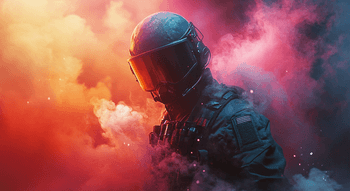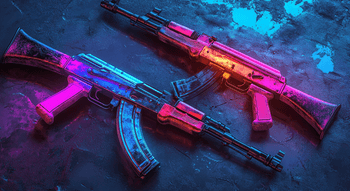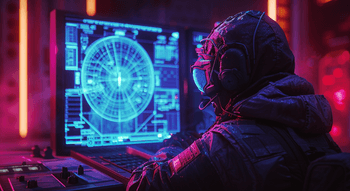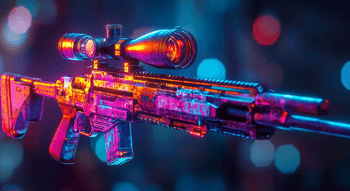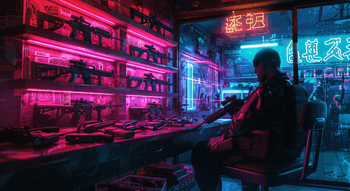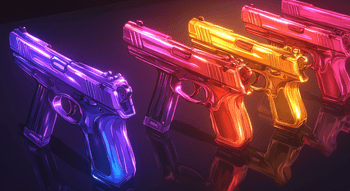Karambit Fire and Ice: Iconic CS2 Knife Skin
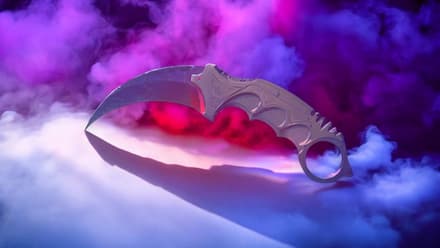
Among all the knives in the game, the Karambit stands out as particularly popular and beloved by the audience. There are no players who wouldn't admire its striking animation and wouldn't dream of having Karambit in their inventory, and not a single knife’s top list is complete without this iconic “can opener.” However, even within the Karambit category, some skins are valued more than others—not merely because of their designs, but due to specific patterns within those designs.
Take, for example, the Karambit Marble Fade skins. While the skin itself might cost around $1.4k, certain patterns of this skin, such as the Fire and Ice variant, can command prices that double or even triple the original cost. In this article, we’ll delve into the Fire and Ice Karambit skin, exploring what makes it so special, the various patterns available, and why some are significantly much more valuable than others.
This article pairs well with CS skin selling sites for knives and other high-value items.
What is so Special About Karambit Marble Fade Fire and Ice?
Let's break it down. The Karambit knife features a Karambit Marble Fade finish that can be found in Chroma, Chroma 2, and Chroma 3 cases. The skin showcases a beautiful gradient, usually blending three colors: red, blue, and yellow. Here’s what the texture looks like:
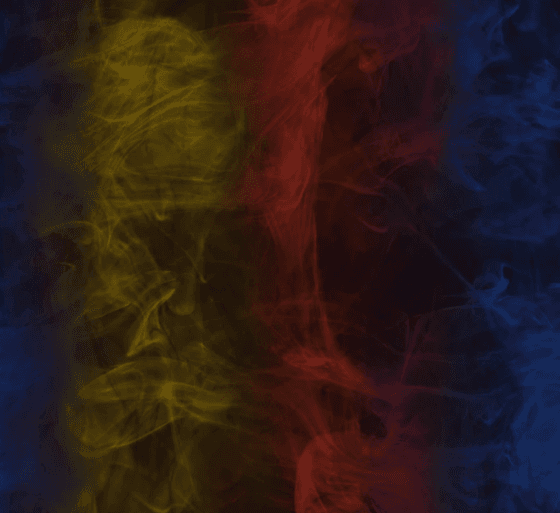
The distribution of each color on the skin is determined randomly. The game uses a seed value ranging from 1 to 999, which is referred to as a seed. The Karambit Fire and Ice seed dictates from which part of the original texture the pattern will originate from.
You can find areas on the texture with varying amounts of yellow, blue, and red. Depending on the seed, some patterns might be dominated by one or two colors. Consequently, the best Karambit Marble Fade patterns, with their unique nicknames in the community, are those that show off a more desirable color scheme.
For example, if a pattern is predominantly yellow and red with no blue, then this pattern is known as Fire and Gold and holds more value than a three-color skin. The same principle is true for Fire and Ice, with almost entirely red and blue playside of the knife, only this time it's even more sought after.
Essentially, the less yellow there is, the more valuable the Fire and Ice Karambit pattern becomes, leading to higher prices and greater envy from other players. The community has categorized various Karambit Fire and Ice pattern seeds into tiers based on their color ratios. Let’s take a closer look at these key tiers.
Reliable CS trade sites are essential for safe and fast skin exchanges.
What Are the Rarest Karambit Fire and Ice Seed Patterns?
Fire and Ice Karambit is the most coveted pattern, but even among these, there are gradations of rarity. There are 12 basic tiers. The first ten, prefixed with “Max,” are considered the true CS2 Fire and Ice Karambit. In these seed patterns, the yellow color is completely absent from the blade, with the main difference being the amount of red present—lower tiers feature less red color on the pattern.
There are also the so-called “Fake” Fire and Ice Karambits, which are predominantly red and blue but have noticeable yellow flecks. These are divided into Max Fake and Fake Fire and Ice (FFI) tiers. Max Fake patterns have minimal yellow, while FFI patterns show more yellow and are less expensive but still hold value in the community.
Let's take a detailed look at the key Karambit Fire and Ice pattern tiers and see what the difference is.
1st Max
Group | Pattern Seeds |
1st Max | 412 |

1st Max, Factory New, pattern #412, price $9,999.99
Let's start with the alpha and omega, the golden standard case of Marble Fade Fire and Ice Karambit, and simply a perfect example of this skin — pattern #412. It has an almost perfect red-to-blue ratio. At the same time, there is no yellow color at all on the visible side of the blade. The price of this knife ranges from $7,000 for Minimal Wear and $9,999 for Factory New. Add StatTrak, and it could push the price to $15,000 if you can find an available sale offer at all.
Top-rated best CS2 skin sites are reviewed for safety and variety.
2nd Max – 4th Max
Group | Pattern Seeds |
2nd Max | 701, 16, 241, 359, 393, 146, 602, 649, 541, 688 |
3d Max | 628, 152, 281, 777, 292, 994, 344, 673, 743, 792 |
4th Max | 126, 48, 129, 787, 332, 918, 780, 874, 908, 923 |
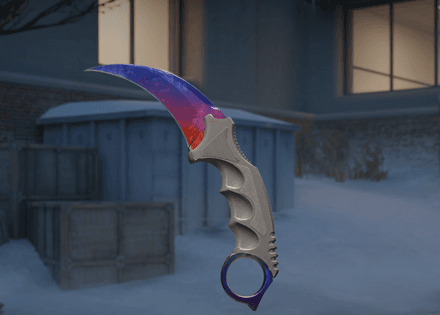
2nd Max, Factory New, pattern #241, price $4,500.00

3d Max, Factory New, pattern #152, price $4,500.00
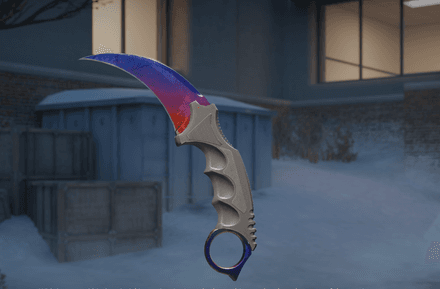
4th Max, Factory New, pattern #129, price $5,000.00
From here and below, noticing the difference between tiers with the naked eye is quite difficult. In general, we can say that Karambit Fire and Ice tiers 2 through 4 are also quite striking, with red-to-blue ratios close to that of the 1st Max.
As we’ve already mentioned, you won’t see any yellow on the front side; the red/blue ratio is the only factor that determines the price here. However, you need to be a jeweler to notice the difference between 2 and 4 tiers. While those differences are subtle and best noticed by connoisseurs, the community’s appreciation remains high.
5th Max – 7th Max
Group | Pattern Seeds |
5th Max | 652, 182, 252, 457, 522, 204, 578, 660, 988, 685, 705, 736, 832, |
6th Max | 873, 112, 340, 773, 356, 444, 452, 471, 607, 230, 621, 631, 761, 876, 982 |
7th Max | 8, 14, 32, 58, 108, 213, 233, 243, 274, 405, 454, 614, 653, 683, 728, 732, 770, 795, 803, 826, 867, 949 |
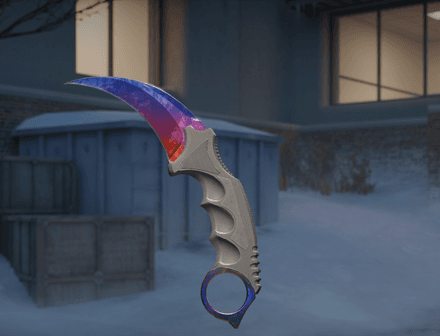
5th Max, Factory New, pattern #252, price $8,881.82
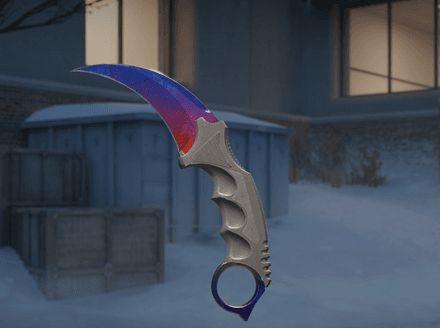
6th Max, Factory New, pattern #112, price $5,550.00
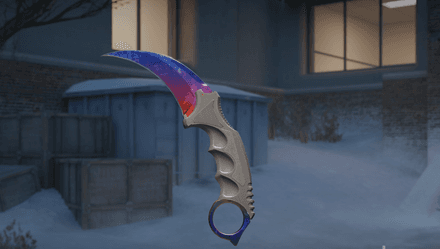
7th Max, Factory New, pattern #8, price $2,399.00
As with the previous examples, the Karambit Marble Fade Fire and Ice tiers 5th to 7th feature slightly more blue and a bit less red. Nevertheless, you can already notice small shades of yellow at the very base of the fastener ring near the hilt.
Surprisingly, you can't tell from the price that these are low tiers. Some individual Karambit Fire and Ice patterns can fetch several thousand dollars more than their counterparts from higher tiers. Ultimately, the market dictates the price, not the community’s traditional grading system, and a cosmetic item costs exactly as much as buyers are willing to pay for it.
8th Max – 10th Max
Group | Pattern Seeds |
8th Max | 702, 5, 178, 854, 202, 337, 188, 378, 966, 406, 461, 539, 696, 971 |
9th Max | 68, 121, 766, 149, 165, 171, 922, 206, 370, 493, 499, 516, 637, 655, 656, 672, 706, 817, 959, 287, 997 |
10th Max | 28, 156, 725, 177, 238, 402, 972, 546, 553, 559, 545, 589, 591, 764, 791, 810, 844, 858, 868, 977 |
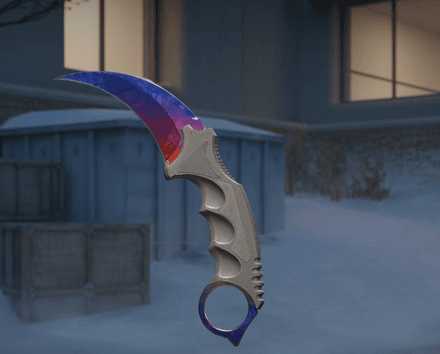
8th Max, Factory New, pattern #378, price $2,207.58
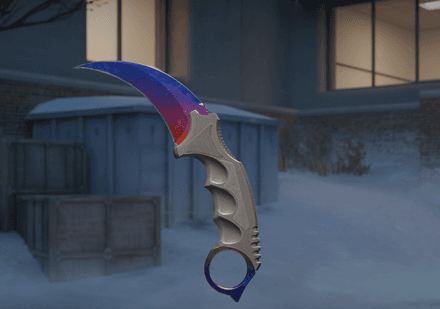
9th Max, Factory New, pattern #68, price $2,111.15
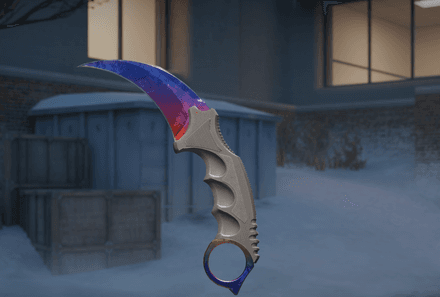
10th Max, Factory New, pattern #402, price $2,702.86
At this point, the difference between 10th Max and 1st Max Fire and Ice Karambit in Counter-Strike 2 is noticeable even to the naked eye. As you move down the blade, it becomes increasingly blue, with only a very small amount of red remaining at the base. By the 10th tier, you can clearly see the bright yellow color on the ring. Despite this, these patterns are still regarded as true Fire and Ice Karambit in CS2.
Max Fake
Group | Pattern Seeds |
Max Fake | 9, 27, 90, 110, 125, 183, 195, 203, 232, 254, 329, 351, 372, 397, 404, 441, 448, 459, 473, 483, 537, 561, 590, 626, 632, 647, 710, 727, 753, 756, 785, 805, 809, 818, 869, 909, 930, 941, 962, 976, 980, 989 |
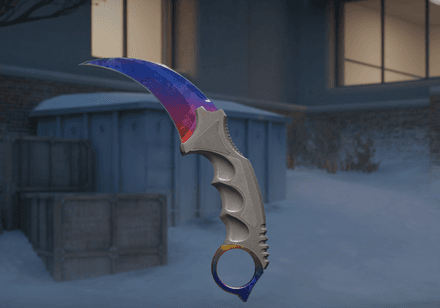
Max Fake, Factory New, pattern #27, price $2,300.00
Finally, we arrive at the Fake category. Fake Max patterns are no longer considered “pure” Fire and Ice Karambits, as the yellow flecks are too prominent on them, and the amount of red is noticeably reduced. However, this doesn’t seem to matter much—after all, the Max Fake Karambit Marble Fade Fire and Ice price still exceeds $2,000.
FFI
Group | Pattern Seeds |
Fake Fire and Ice | 60, 62, 71, 98, 148, 170, 196, 216, 222, 234, 266, 304, 307, 309, 315, 321, 328, 333, 364, 368, 400, 411, 413, 415, 438, 445, 463, 485, 489, 496, 506, 535, 570, 582, 593, 605, 630, 663, 667, 670, 674, 691, 717, 723, 746, 794, 822, 845, 846, 931, 948, 958 |
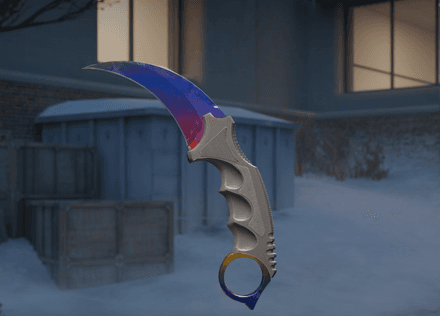
FFI, Factory New, pattern #98, price $2,475.00
To really grasp the difference between the tiers, compare the 1st Max to the Fake Fire and Ice. You'll immediately notice the contrast. The bright red areas are almost entirely absent in the Fake pattern, leaving only faded hues at the base. On the ring, the yellow-to-blue ratio is roughly 50/50. Despite this, the price of FFI patterns is consistently high, rarely dipping below $2,000.
We also have separate materials about popular patterns for other knives, such as:

